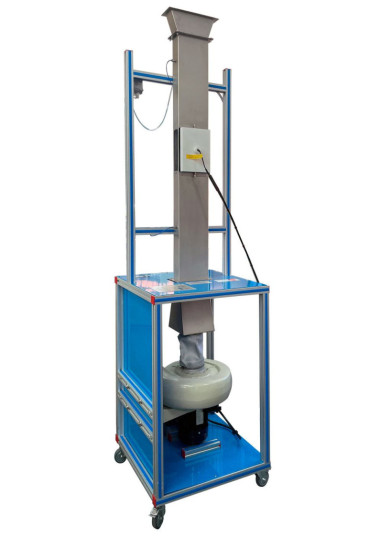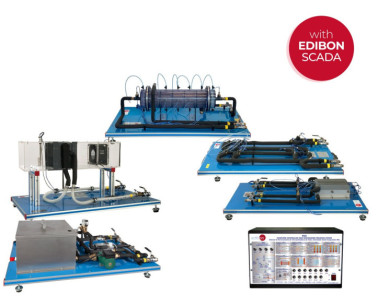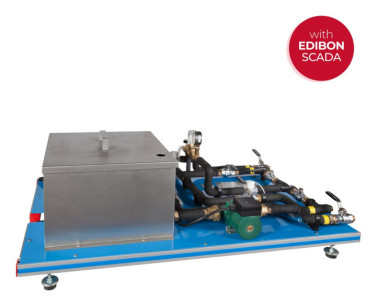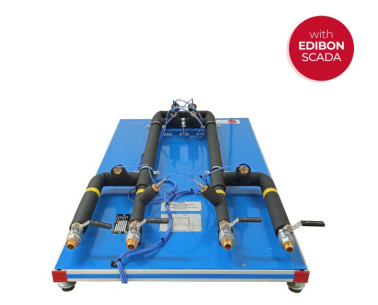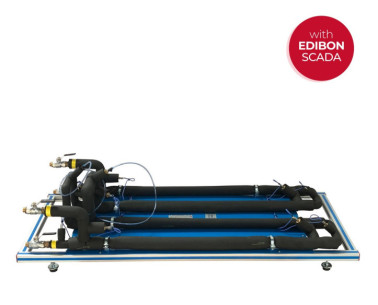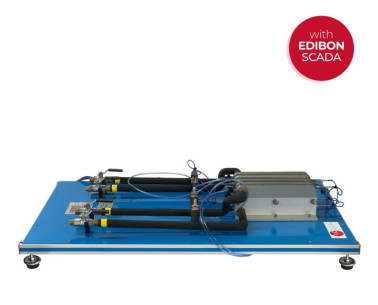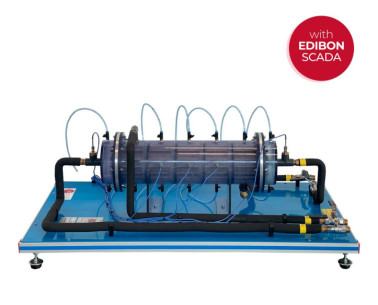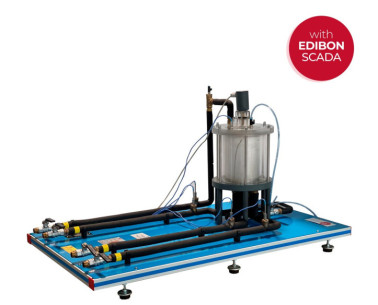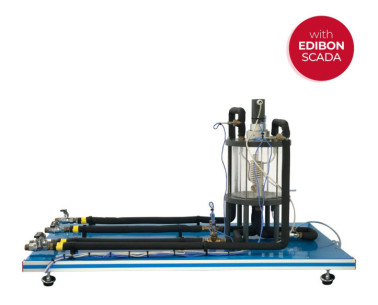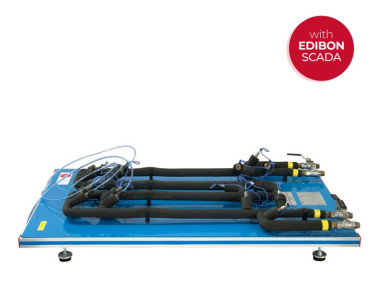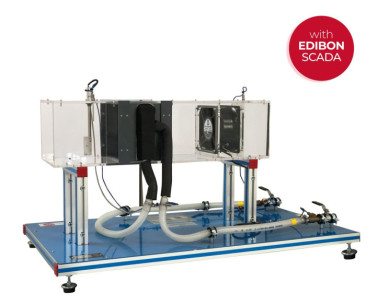The Cross Flow Heat Exchanger (TIFCB) basically consists of a rectangular wind tunnel made of stainless steel, resistant to corrosion. It has a bellshaped inlet and a central opening arranged longitudinally with two supporting elements made of stainless steel to retain the plates with the different exchangers.
The tunnel is installed over the inlet of a powerful centrifugal fan and connected to it by an elastic coupling flange. This fan aspirates air from the tunnel and expels it outside, making air flow along the tunnel. There is a variable speed drive to control the air flow through the tunnel with the fan control.
The TIFCB unit includes two types of exchangers: a pinned (multi-tube) exchanger and a single tube exchanger, where the heating element is lodged.
To perform all the practical exercises the unit has two temperature sensors to measure the air temperature in the tunnel, before and after passing through the heat exchanger, a control temperature sensor lodged in the heating element and a speed sensor that allows the user to determine the air speed along the tunnel.
Available two optional exchangers: Local Heat Transfer Exchanger (TIFCB/A) and Finned Tube Exchanger (TIFCB/F).
 Preferências de cookies
Preferências de cookies

